Best flowers to plant if you rent – 10 blooms for flexible gardening
Gardeners who live in a rental property can still carefully select flowers to create a yard brimming with color

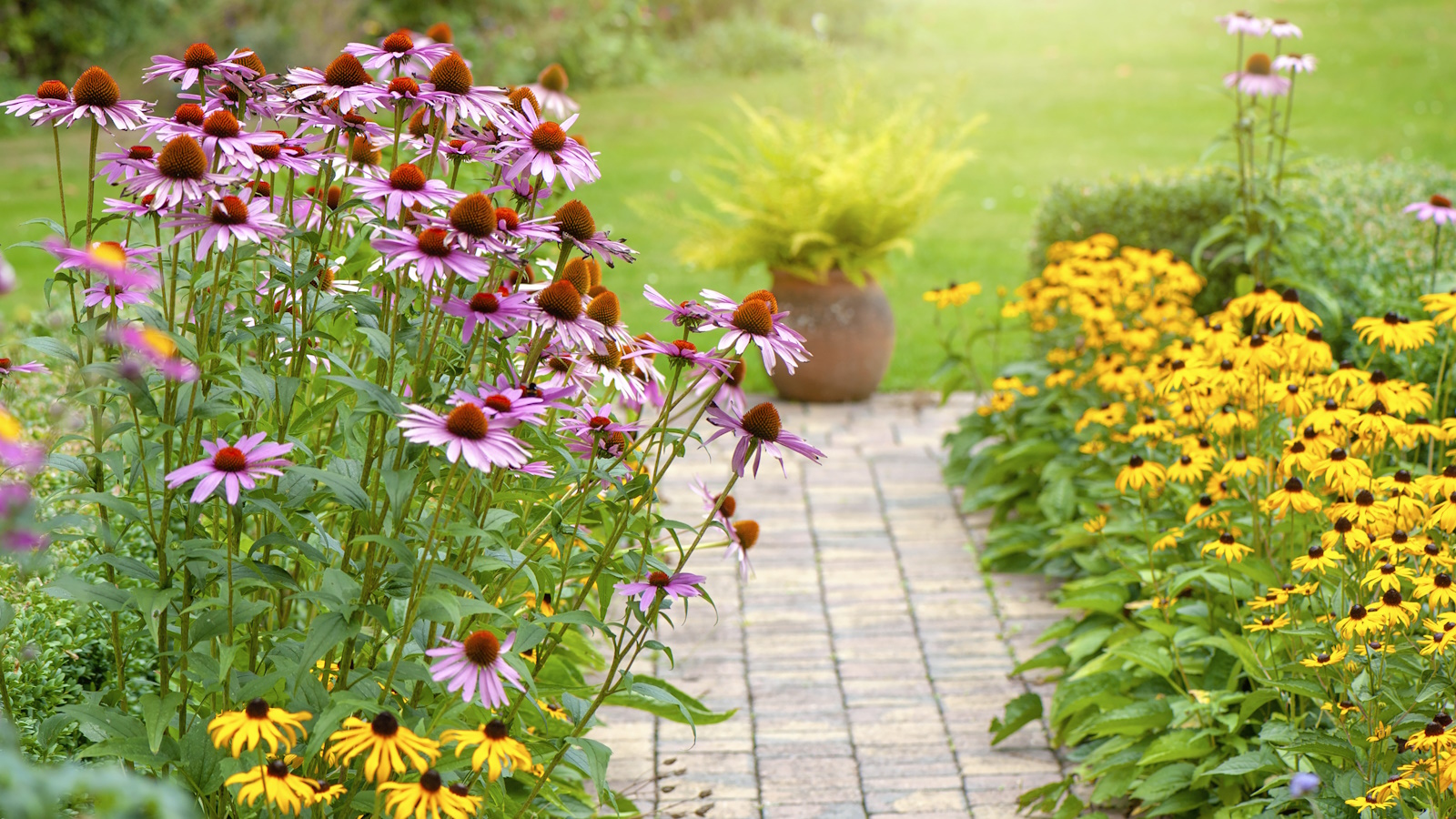
When it comes to rental properties, it can sometimes be hard to know how to approach what to do in the backyard. There are so many possibilities with the space you rent and not owning your home doesn't mean you can't get busy gardening.
It just takes a bit of research to know how to garden in a rental property but there are so many backyard ideas that can be adopted by renters, including a whole range of flowers that can be planted.
Whether its choosing annuals that will stick around for one season or carefully curating a container garden for easy moving, experts have shared with us the best flowers to plant if you rent.
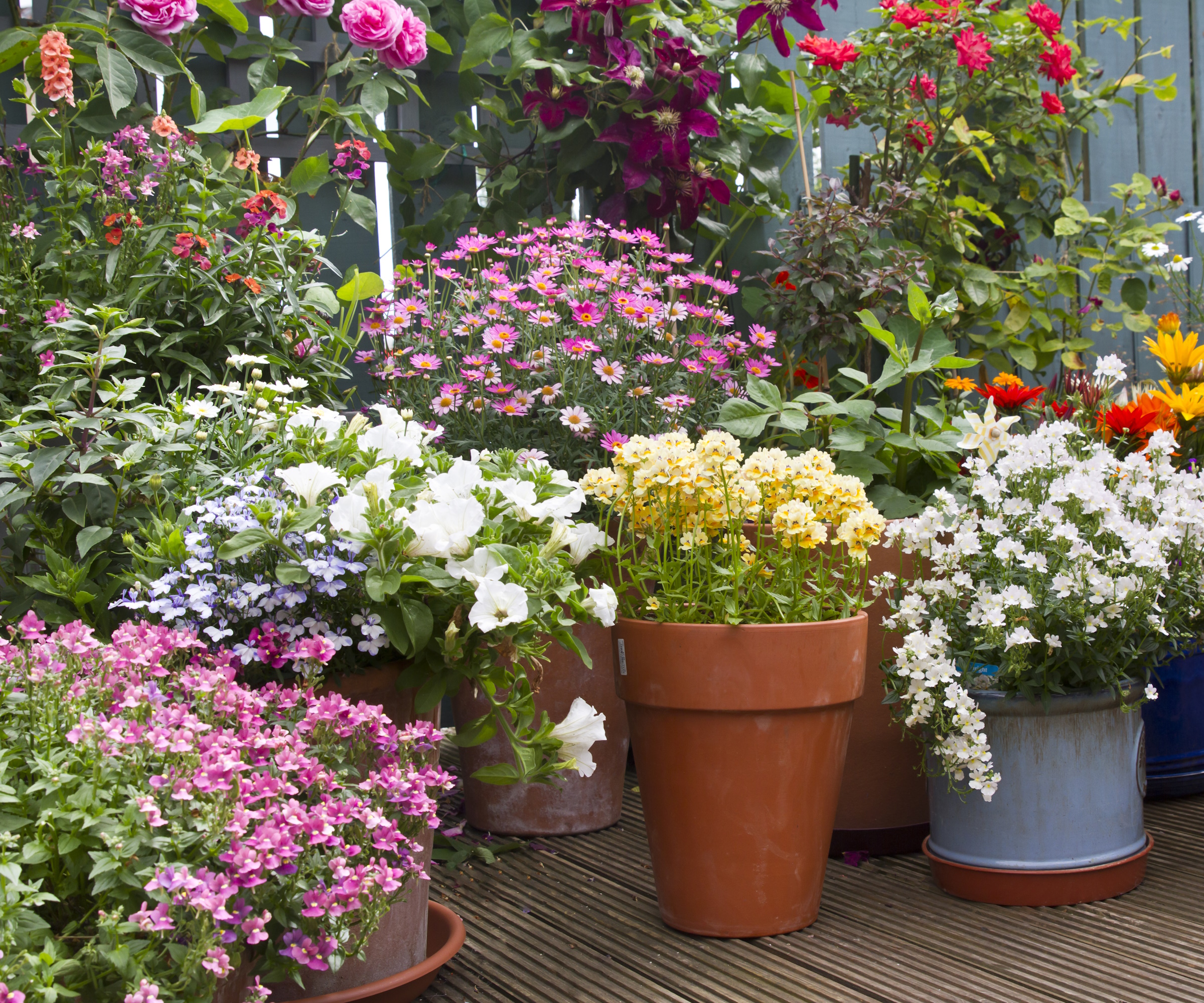
10 flowers to plant if you rent
Renters can enjoy a garden brimming with blooms, it just takes careful selection to ensure you enjoy them at your rental property for the period you live there and within agreement of your landlord.
1. Zinnias
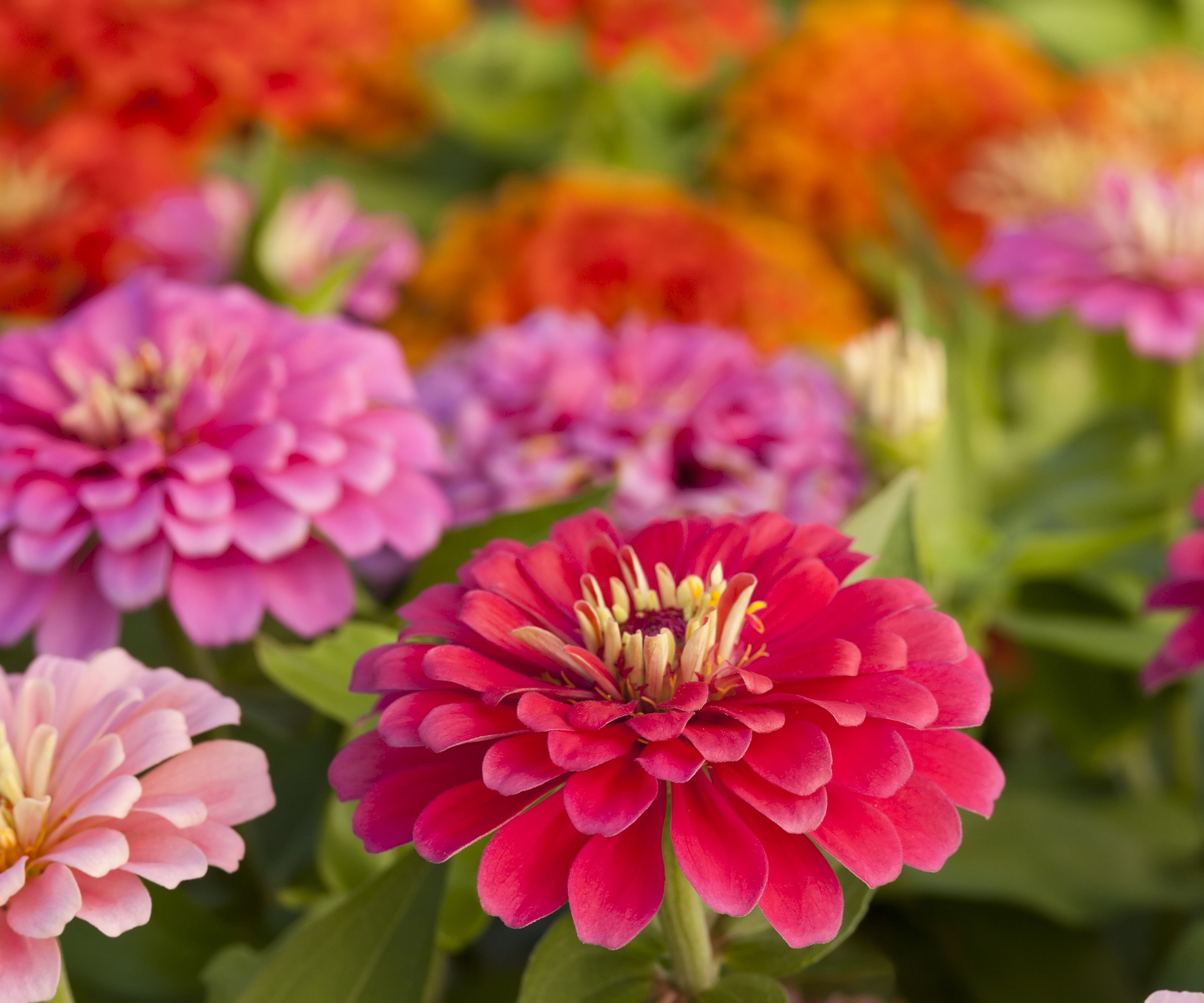
Growing zinnias is a must for renters looking for vibrant blooms in late spring and summer. These spectacular blooms are among the best annual flowers, ideal for planting in a rental property if you'll only be there for a year.
'As a renter myself, I grow a range of different flowering annuals in the garden and just dot them around the garden beds to add a little color,' says Annette Hird, expert gardener at Easy Urban Gardens. 'Because they're annuals, they don't need a permanent spot to grow each year,' she adds.
You should plant zinnia seeds in early spring under cover, protecting them from any late frost. They'll thrive in US hardiness zone 2 to zone 11 and enjoy plenty of sun.
Design expertise in your inbox – from inspiring decorating ideas and beautiful celebrity homes to practical gardening advice and shopping round-ups.
'Zinnias thrive in full sun and tolerate heat and drought once established,' says Jana McDaniel, garden expert and founder of First Saturday Lime. 'Deadheading zinnias once their blooms are spent extends the flowering season,' she adds.
For renters with limited outdoor space, you can also find zinnia grow bags to grow indoors, like this zinnia grow kit from Nature Hills.

Annette Hird has an Associate Diploma in Horticulture and is an urban gardening expert. She has worked as a professional propagator and managed, maintained and improved many urban and rural gardens. She also enjoys growing her own fruit, vegetables, herbs and flowers as well as many different types of ornamental plants.
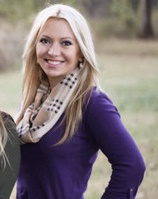
Jana is a garden expert and founder of First Saturday Lime, an eco-friendly pest control company. She has grown up tending to gardens and animals and now advises on gardening matters.
2. Cosmos
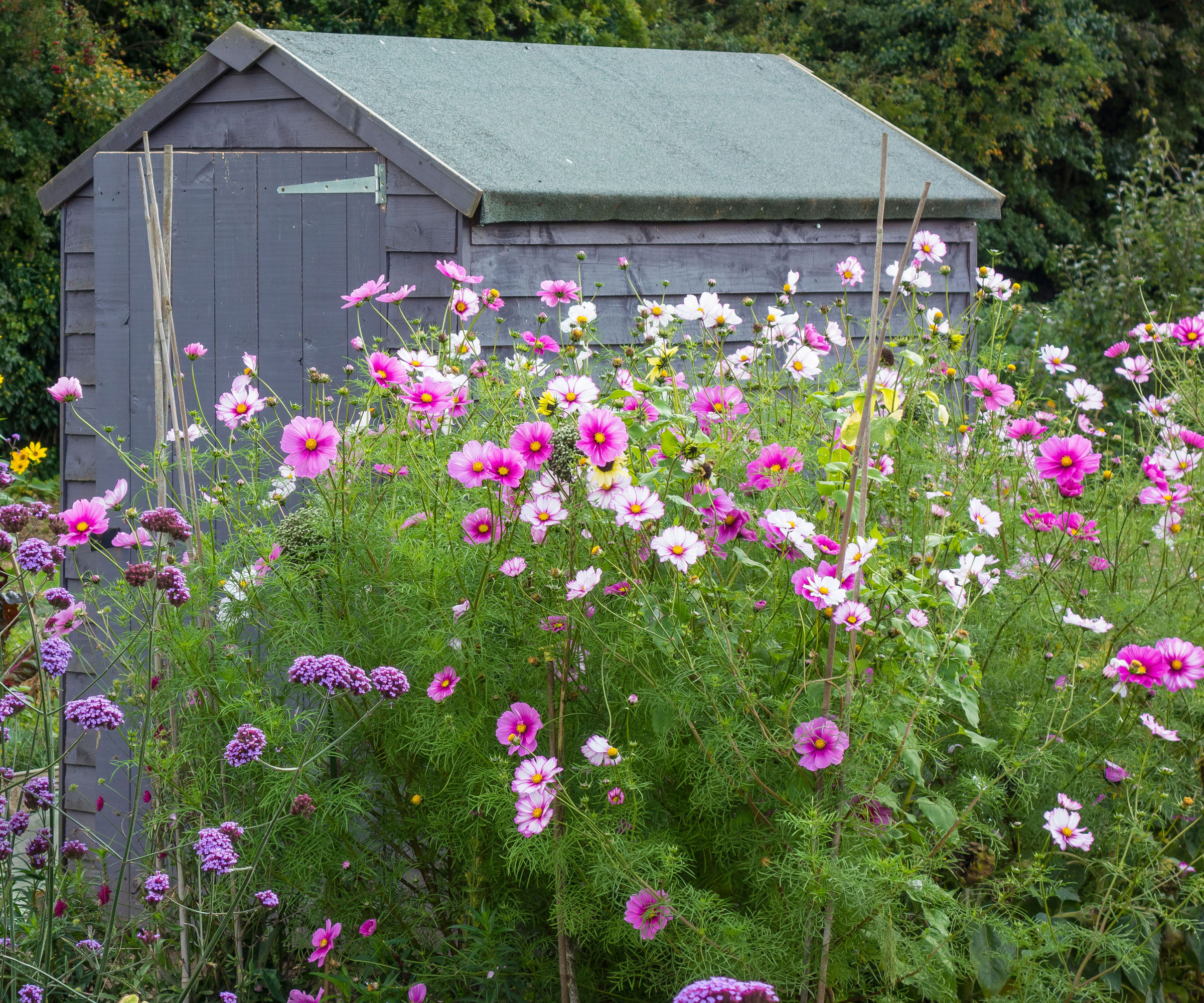
Another annual to consider planting for each season you are at your rental property is cosmos. Growing cosmos is highly rewarding, brightening up your garden with its charming flowers.
If you are sowing seeds indoors, you should aim to plant cosmos seeds during March and April. This protects it from late frosts and provides the perfect environment for the seeds to germinate. They can then be transplanted outside as the weather warms up, growing best in US hardiness zone 7 to zone 11.
'Provide seedlings with at least 6 hours of direct sun and keep the soil evenly moist until the plants are established,' says Jana. 'You should then allow the soil to dry slightly between watering,' she adds.
Find cosmos seeds online, like these mixed cosmos seeds from Amazon.
3. Lavender
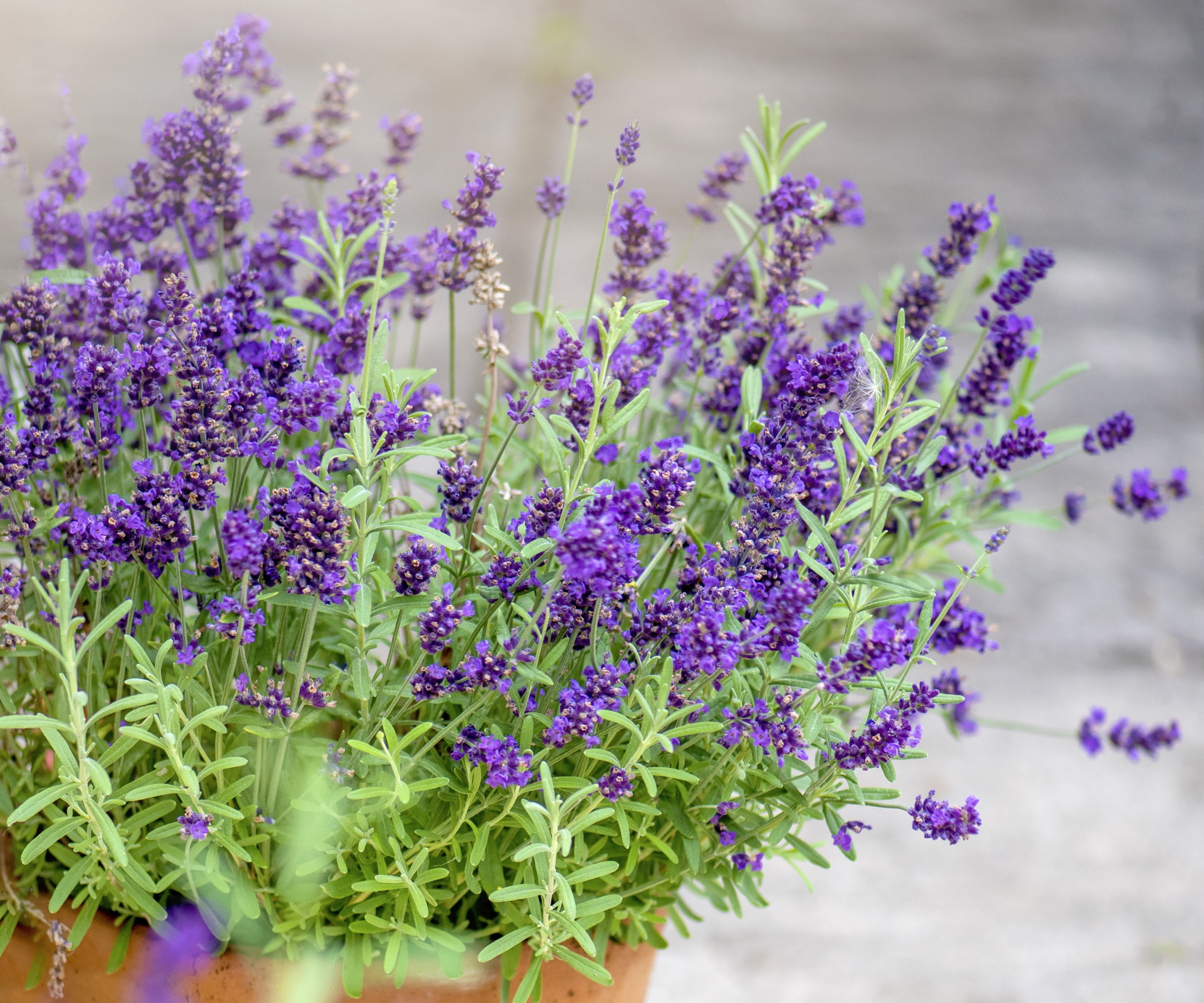
If you're a renter wishing for a wildlife garden, then consider growing lavender. Although lavender is a perennial and will return each year, lavender grows well in pots well and is ideal for planting up in a container so that it doesn't have a permanent position. Lavender is also a flower that attracts bees so you can watch your outdoor space become a pollinator haven.
'Plant lavender in full sun and with a very well-draining potting mix,' says Jana. 'You should prune lavender annually after blooming for returning flowers,' she adds.
Lavender will grow in US hardiness zone 5 to zone 10. You should take care to water lavender correctly because soggy soil may cause the flowers to discolor.
You can buy lavender plants online, like this lavender from Nature Hills.
4. Coneflowers
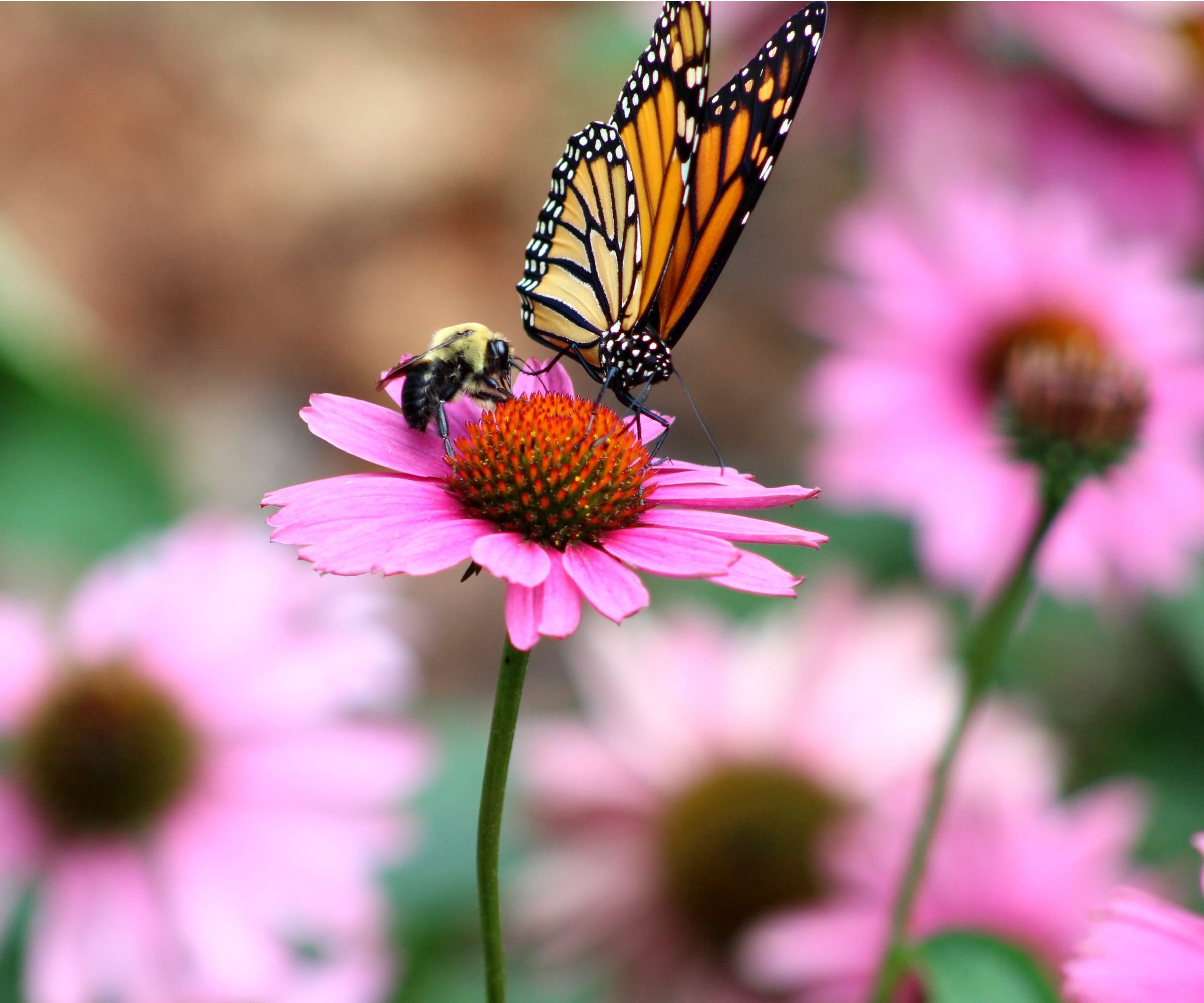
Another container plant for pollinators is the beautiful coneflower, or echinacea. These eye-catching blooms are perennial, so you can create your ideal container flower arrangement that will grow back each year.
There are lots of coneflower varieties to choose from, all of which bloom in summer and attract bees and butterflies. They add height to pots and are great for renters who aren't able to plant flowers in permanent positions in the ground.
'Choose a container with drainage holes and make sure to plant coneflowers in a well-draining potting mix,' says Jana.
You should also cut back coneflowers after blooming to encourage thriving blooms in the next season.
Coneflowers come in many different colors, like this yellow coneflower from Nature Hills and this purple coneflower from Nature Hills.
5. Marigolds
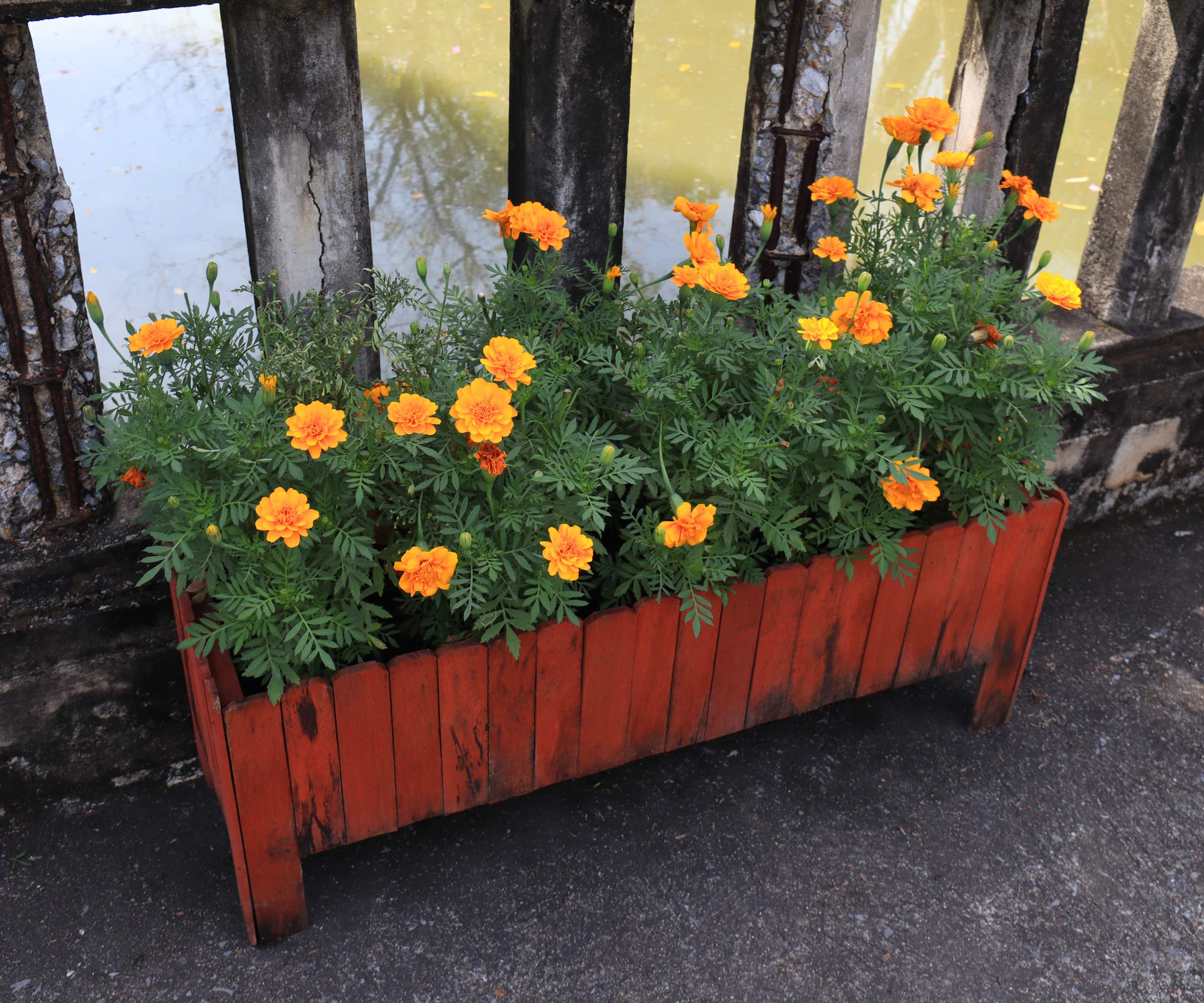
If you have a kitchen garden on your rental property, you should consider planting marigolds in your vegetable garden as natural pest deterrents. These orange blooms are annuals, so you can plant them exactly where you need them for one season.
You can grow marigolds from seed, although it is recommended to sow them outdoors after the danger of frost has passed. They grow best in US hardiness zone 2 to 11 and thrive in a sunny position.
It is possible to also grow marigolds in pots if you aren't sure how long you will stay at your rental property, and they often make popular additions to hanging basket arrangements.
If you don't have a lot of outdoor space to work with or want to avoid planting directly into the ground of your rental property, try using this marigold grow kit from Nature Hills.
6. Anemones
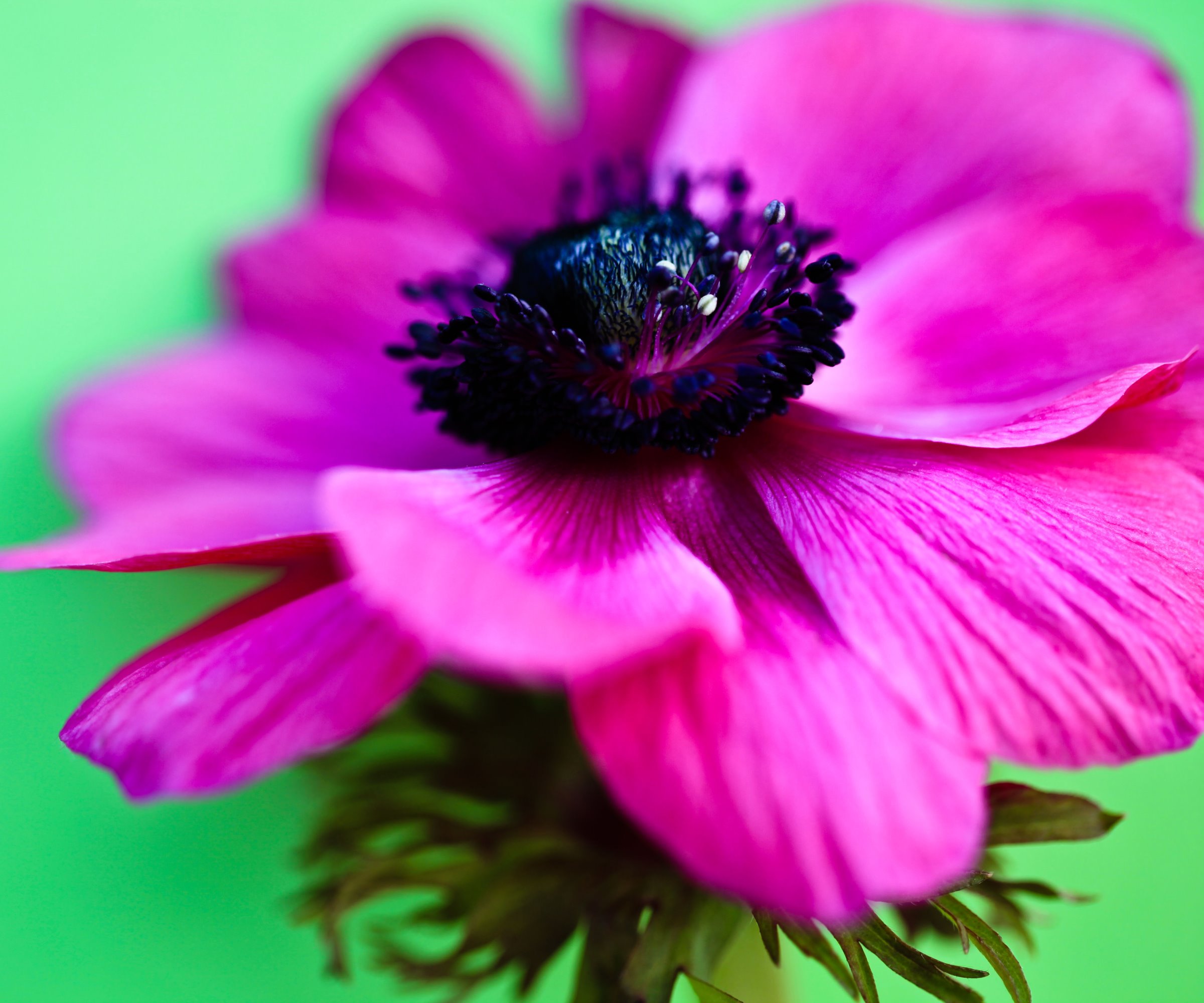
For renters who are planning a cut flower garden, consider planting anemone bulbs for delicate florals. These perennial plants cope well in containers, so you can reposition your cut flower garden as necessary.
They thrive in US hardiness zone 3 to zone 10 and don't mind hiding from the sun, making them one of the best spring flowers for shade.
'Keep their soil consistently moist but not waterlogged and apply mulch to retain moisture,' suggests Jana.
Growing anemones in containers also means you can move them around to provide shelter once they finish flowering during colder seasons.
There are plenty of types of anemone to choose from, like this snowdrop anemone from Nature Hills.
7. Sunflowers
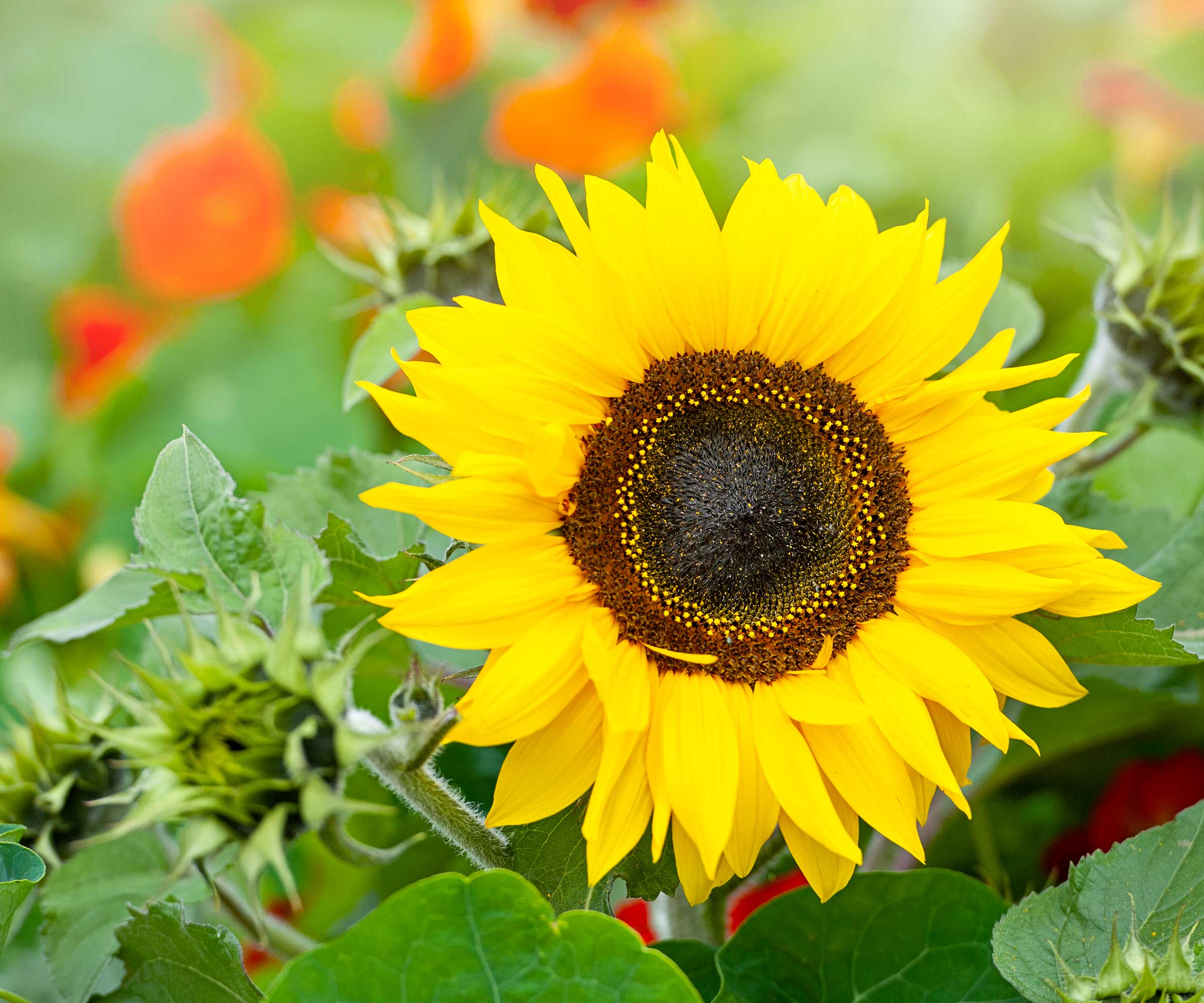
A long-loved favorite flower for the summer season, sunflowers are annual plants that will brighten up your yard for one season before fading away.
You can grow sunflowers across US hardiness zone 2 to zone 11, so long as you provide a sunny position. Plant sunflower seeds indoors in early spring, or directly outside after late frosts in late spring to early summer.
Sunflowers are loved for their large blooms and ultimate height of 10 feet or taller. They can instantly spruce up your backyard and transform your rental property into a summer paradise.
Don't forget to harvest sunflower seeds, both for eating and to plant again next year.
Find sunflower seeds to plant online, like these sunflower seeds from Amazon.
8. Geraniums
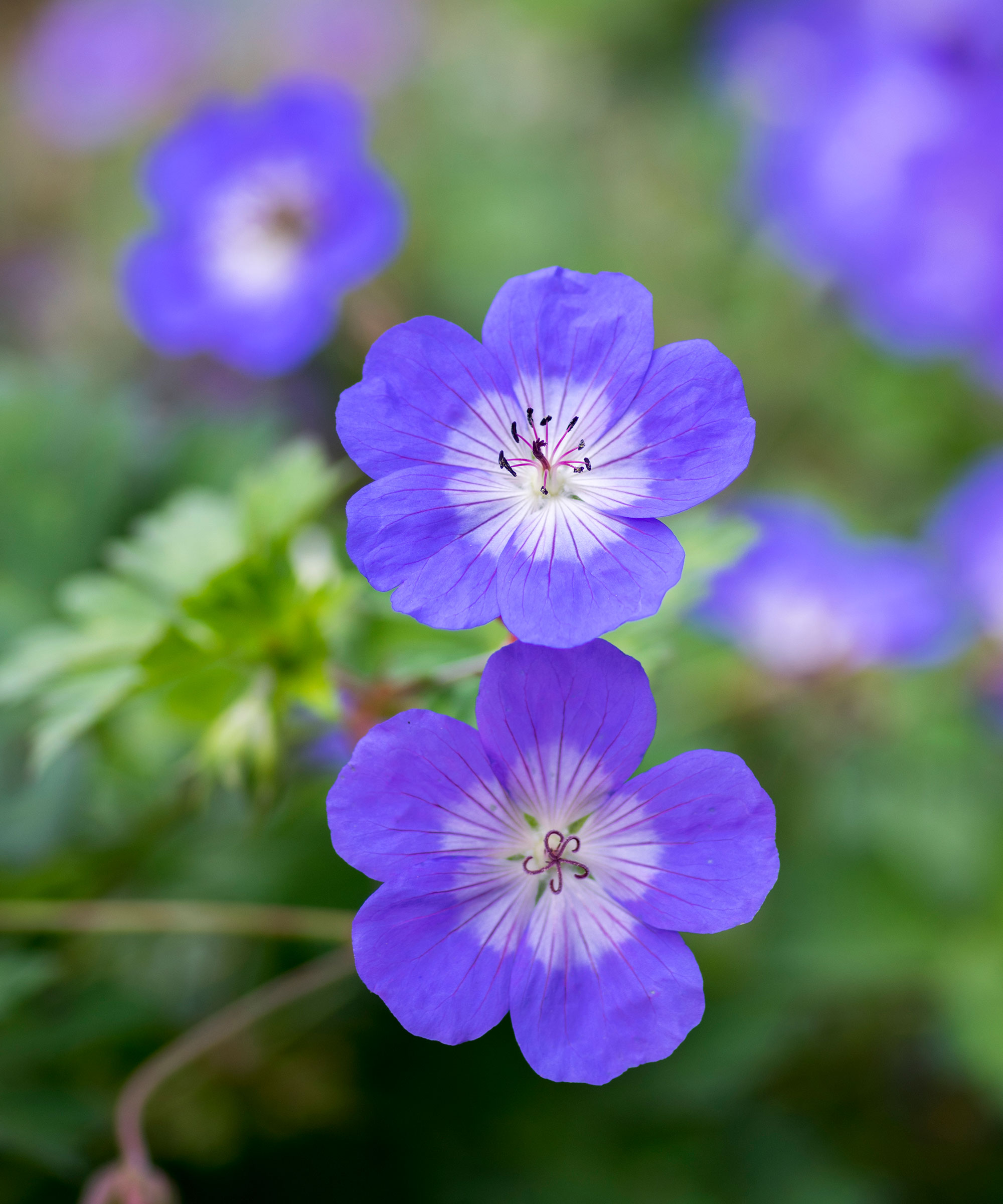
To make the ultimate thriller, spiller, filler containers, consider incorporating geranium for bright trailing plant. Geraniums are perennial plants that will grow back each year, but they are ideal for renters wanting to create impactful containers and brighten up different corners of your outdoor space.
'Select a container with ample drainage holes, use a well-draining potting mix and make sure to provide six or more hours of sunlight,' says Jana.
There are plenty of hardy geranium varieties to choose from, all of which are easy to grow. They don't enjoy waterlogged soil, so thrive particularly well in pots that allow soil to drain well, such as a terracotta planter.
You can grow geraniums in US hardiness zone 3 to zone 9 and can keep geraniums blooming by providing plenty of sun and pruning geranium for winter.
Shop for geranium plants online, like this Azure Rush Geranium from Nature Hills.
9. Dianthus
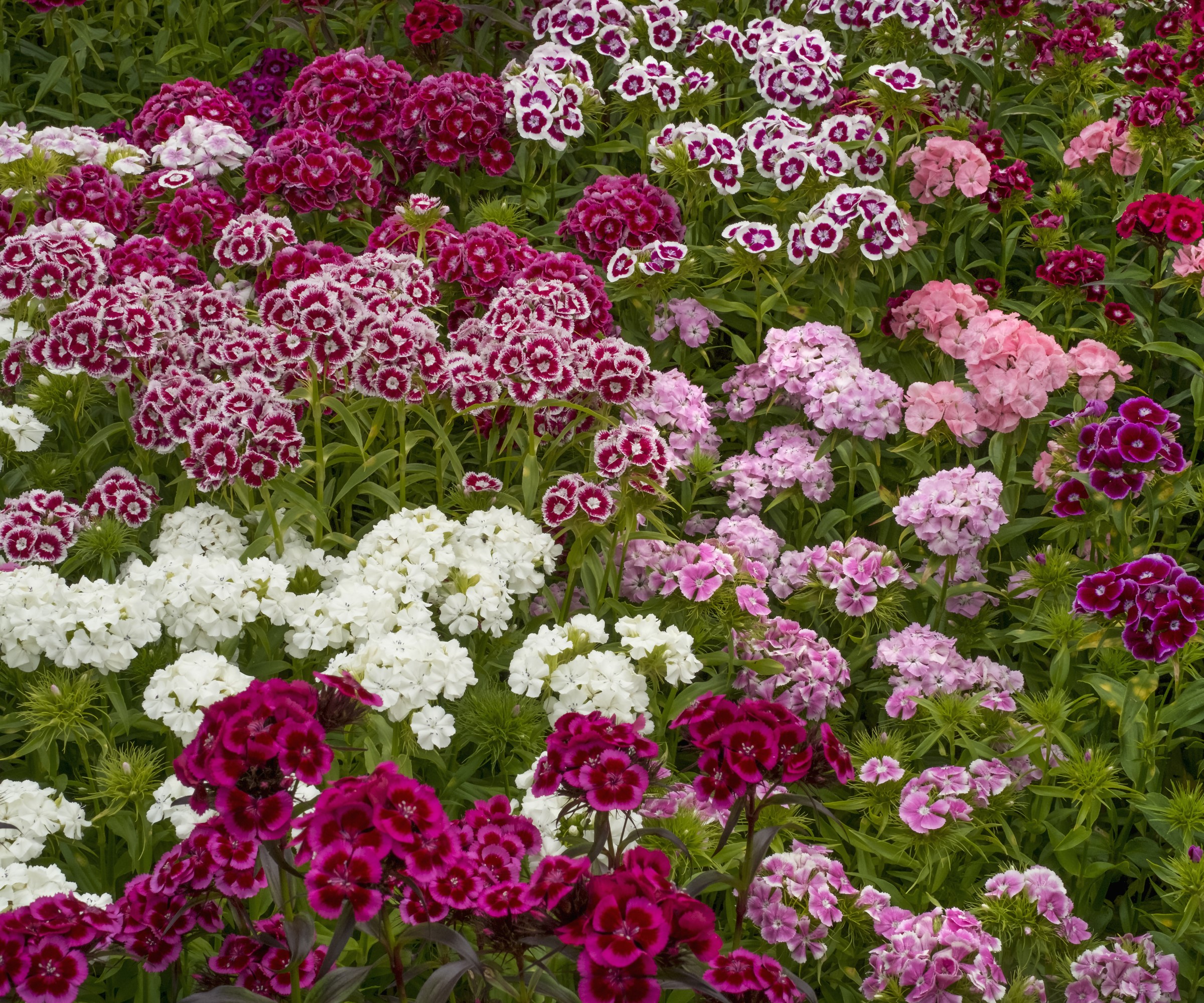
Another of the best plants for hanging baskets is dianthus, a flowering plant that produces charming clusters of unique blooms. Dianthus is a great choice for filling baskets and containers with lots of color and texture. As a perennial you can be sure that your pots will be brimming with dianthus again in the next season.
Dianthus can grow in US hardiness zone 3 to zone 9, enjoying plenty of sun and tolerating short periods of dry soil. 'Water thoroughly then let top inch of soil dry before watering again,' says Jana.
You should deadhead dianthus when their bright flowers start to fade and discolor in mid-fall. Doing so will reward you with flourishing blooms next spring.
Dianthus plants come in an array of colors and patterns, like this beautiful Star Starburst Dianthus from Nature Hills.
10. Dahlias
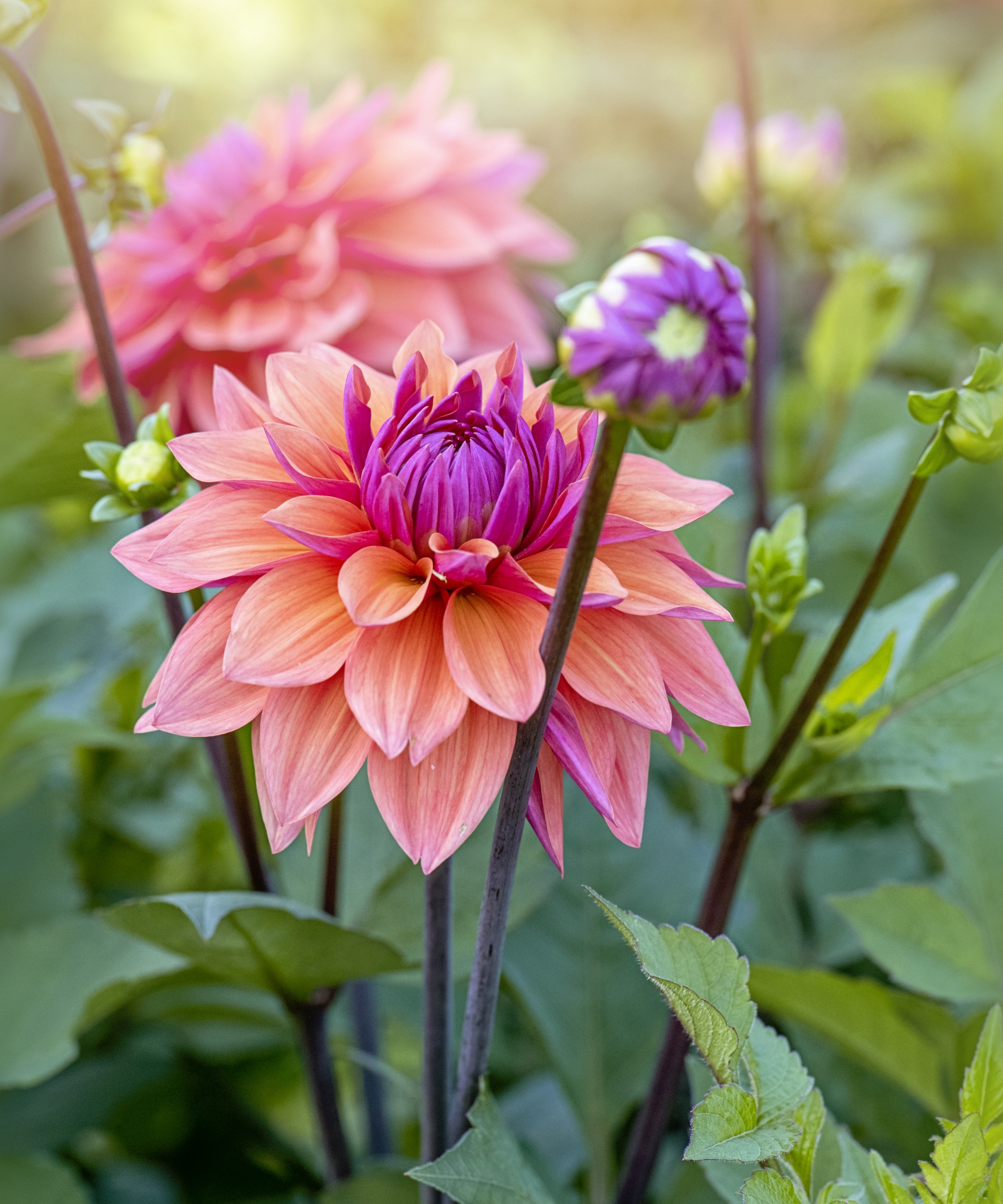
Depending on which US hardiness zone you are gardening in, dahlias will grow as annuals or perennials. If you are in US hardiness zone 8 and above, you are likely to see dahlias return next summer while colder zones will enjoy dahlias for one season.
Either way, renters can enjoy growing dahlias for summer color and also choose to plant them in larger pots for flexible positioning.
'I grow some dwarf dahlias in pots which give a fantastic display during the warmer months,' says Annette. 'Because they're dwarf varieties, they don't need to be staked which makes them perfect for container growing,' she adds.
Dahlias have beautifully intricate flowers and with so many types of dahlias to choose from, there is a variety to add color to any rental backyard.
Grow dahlia from seed using these rainbow dahlia seeds from Amazon.
FAQs
How do you move with container plants?
If you are planning to move home and have a range of container garden plants to move with, you want to ensure they are transported safely. It can be a good idea to repot your plants into temporary nursery pots that won't get damaged in transit.
Likewise, make sure to secure your plants in the vehicle they are being transported in - such as with bubble wrap or in cardboard boxes. Your plants shouldn't become stressed by temporary transport, but make sure to plant them up and give them some TLC soon after arriving to your new home.
Renters don't have to be limited when it comes to gardening. Whether you're planting annuals or making beautiful containers for your yard, rental properties can be brimming with florals too.
If you also want to save some money in the garden, check out our expert list of backyard ideas on a budget.

Tenielle is a Gardens Content Editor at Homes & Gardens. She holds a qualification in MA Magazine Journalism and has over six years of journalistic experience. Before coming to Homes & Gardens, Tenielle was in the editorial department at the Royal Horticultural Society and worked on The Garden magazine. As our in-house houseplant expert, Tenielle writes on a range of solutions to houseplant problems, as well as other 'how to' guides, inspiring garden projects, and the latest gardening news. When she isn't writing, Tenielle can be found propagating her ever-growing collection of indoor plants, helping others overcome common houseplant pests and diseases, volunteering at a local gardening club, and attending gardening workshops, like a composting masterclass.